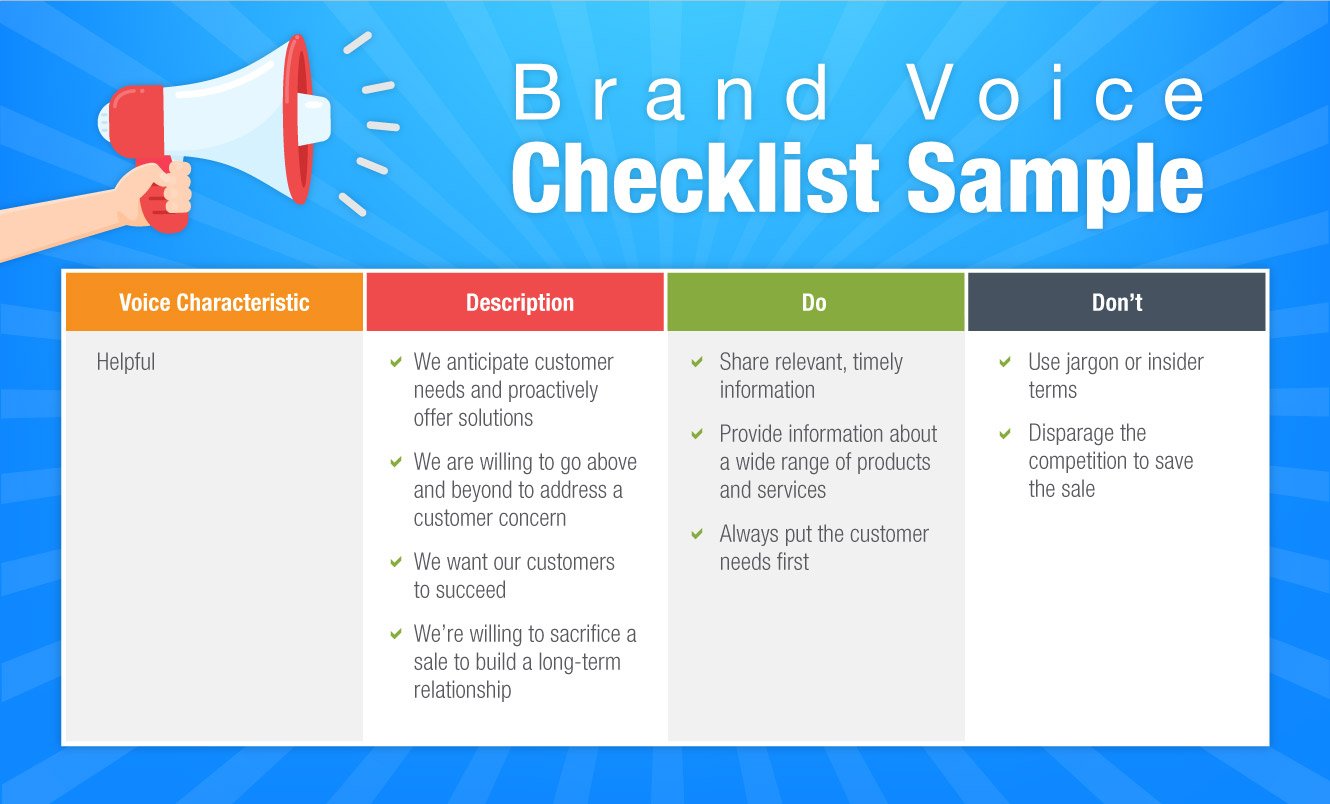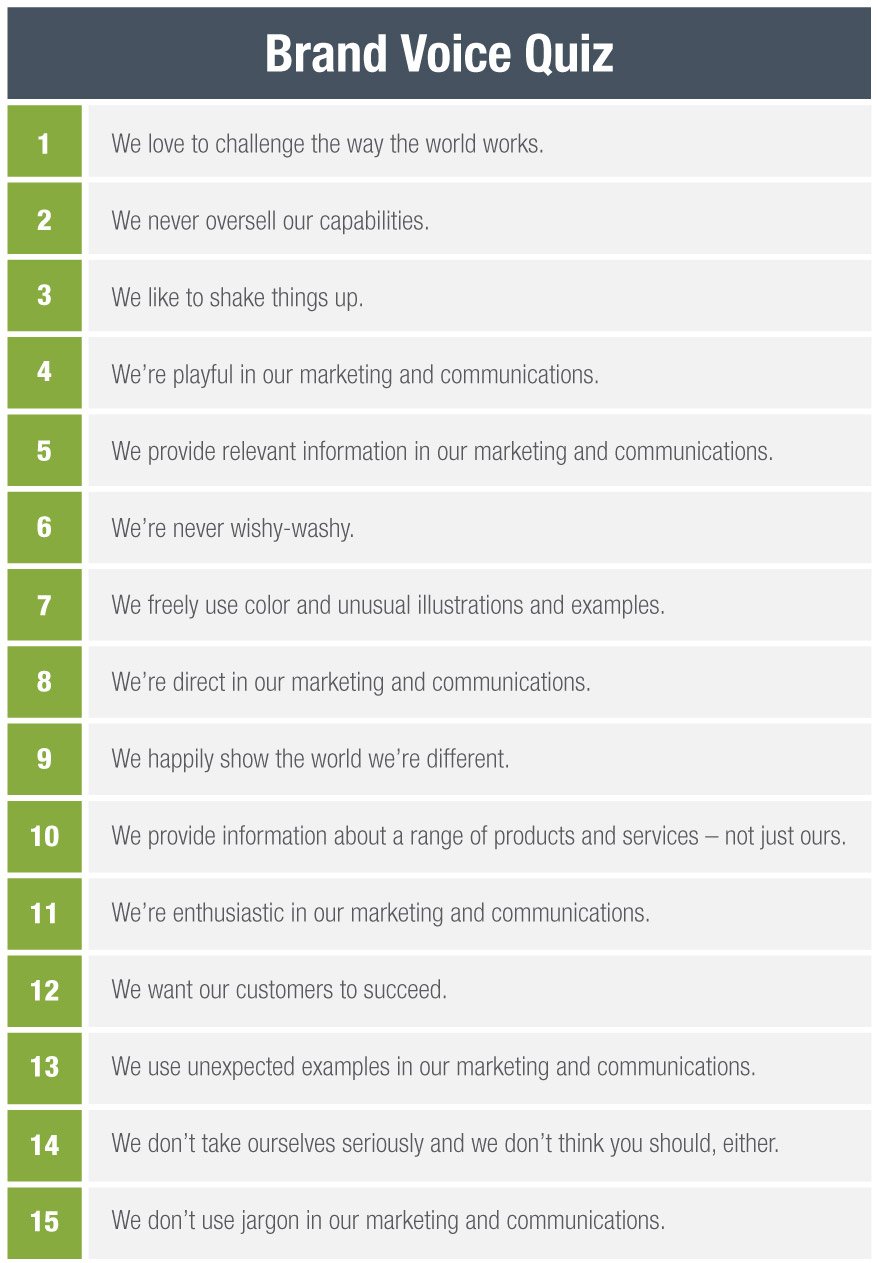The Payroll Blog
News, tips, and advice for small business owners
- Home
- Resources
- Payroll Blog
- Brand Voice: A Primer for Small Business Owners
Brand Voice: A Primer for Small Business Owners
A clear, consistent brand voice helps your business stand out from the competition, create connections with new customers, and deepen relationships with existing customers. Check out these DIY tips on how to establish a unique brand voice, and take the What Is Your Brand Voice? assessment.

Those who stand for nothing will fall for anything.
Unlikely British newsman Alex Hamilton had small businesses in mind when he dropped that quote during a 1978 radio broadcast. But the truism unquestionably applies to business owners who fail to establish a brand identity, experience, and voice. A brand is visual and visceral; it is something you see and feel. Establishing and maintaining a strong brand is an imperative for small business owners.
A brand fosters recognition, familiarity, and connection. It includes everything from the business name, colors and logo to how you greet a customer, fulfill orders and handle product or service issues. Ultimately, a brand identifies and differentiates one business, product, or service as distinct from another. It is the face of the company and a set of expectations functions as the first impression and—if done well—makes a lasting impression.
The Voice of Differentiation
Establishing a unique brand voice is key to helping your business rise above the din of a crowded marketplace. Imagine a night out with friends at a crowded bar. The music blares, glassware clatters, people jostle for position, the energy is frenetic. Yet one person across the bar seems to hold a group rapt, leaning in closer and closer to hear her every word. That’s the power of a strong brand voice; it commands attention.
Brand voice represents the values a business supports and the story it tells. It is the banter, flow, imagery, style, and overall personality a business presents to the marketplace. While a brand voice generally doesn’t change, a brand tone, or how a business expresses its personality, can vary based on the audience, communication channel or context.
DIY Tips to Define Your Brand Voice
Expensive, in-depth marketing research isn’t necessary to define a brand voice for your small business. Consider these DIY tips to get started.
- Know Your Values. A brand voice is only as effective as the values at its foundation. Values are the core set of beliefs and guiding principles on which a business is built. Values influence daily operations, support employee engagement, serve to differentiate you from the competition, and help drive customer loyalty. Essentially, your values define what you stand for as a business.
- Know Your Customers. The more you know about your customers, the better. Gather as much information as possible—age, gender, occupation, marital status, interests, activities, where they like to get their information, and more.
- Personify Your Business. Gather a group of customers and host an open forum to discuss the personality of your business. Marketing researchers and political campaign consultants frequently use a series of “If this was a …” conversation prompts to capture how people describe a business, person, or issue. Set a timer for 10 minutes, tee up the question and let the responses flow. Compile the responses, looking for common words and phrases.
- If this business was a restaurant, what kind of food would it serve?
- If this business was a vacation destination, where is it located in the world?
- If this business was a blind date, how did it go?
- If this business was a fashion accessory, what would it be?
- If this business was a food, what would it be?
- Personify Your Competition. Reset the clock with that same group of customers, and this time ask the same questions regarding your competitors. Compile the responses and look for areas where your business stands out.
- Review Social Media & Customer Communications. Review emails, social media posts, customer special offers and more. Is there a consistent feel? Does it seem like each piece came from the same business? Does it seem like one or more items could’ve been written by one of your competitors?
- Document Your Brand Voice. Create a brand voice chart, a document that describes the characteristics consistent with—and unique to—your brand, a few words to describe the characteristic, and a set of do’s and don’ts. This document helps ensure consistent use of your brand voice across the business.

Yes, You Need a Brand Voice
A clear, consistent brand voice supports your core values, helps your business stand out from the competition, creates connections with new customers, and deepens relationships with existing customers. It contributes to shaping customer perceptions, building trust and loyalty, and driving sales. Take the “What Is Your Brand Voice?” assessment and see if you currently lean toward one of the more common brand voice options.
What Is Your Brand Voice?
Brand voice represents your business vision, mission and values. It highlights what makes your business unique and helps connect, build and maintain relationships with new and existing customers. Your brand voice can be authentic, helpful, irreverent, quirky, passionate and more. Consider the following statements and select the three you believe best represent your business. Scroll down to learn what brand voice resonates with your business.

- Your brand voice leans toward authentic if you selected statements 2, 8 and 15. An authentic brand voice is relatable, neighborly and genuine. It never brags or over-promises and is committed to full transparency.
- Your brand voice leans toward helpful if you selected statements 5, 10 and 12. A helpful brand voice tends to clearly explain concepts and offer solutions, even if that means turning away the business.
- Your brand voice leans toward irreverent if you selected statements 4, 7 and 14. An irreverent brand voice tends to take its product and customers—but not itself—seriously. It is casual, playful and finds joy in offbeat humor.
- Your brand voice leans toward quirky if you selected statements 3, 9 and 13. A quirky brand voice tends to be friendly, witty and enjoy surprises. Marketing and communications tend to use obscure cultural references and fringe humor.
- Your brand voice leans toward passionate if you selected statements 1, 6 and 11. A passionate brand voice tends to champion social responsibility and causes and isn’t afraid to take a stand—even at the risk of alienating select customers.
Assessment Inspired by Content Marketing Institute
View Our Plans and Pricing
Small Business Is Our Business.
This website contains articles posted for informational and educational value. SurePayroll is not responsible for information contained within any of these materials. Any opinions expressed within materials are not necessarily the opinion of, or supported by, SurePayroll. The information in these materials should not be considered legal or accounting advice, and it should not substitute for legal, accounting, and other professional advice where the facts and circumstances warrant. If you require legal or accounting advice or need other professional assistance, you should always consult your licensed attorney, accountant or other tax professional to discuss your particular facts, circumstances and business needs.
